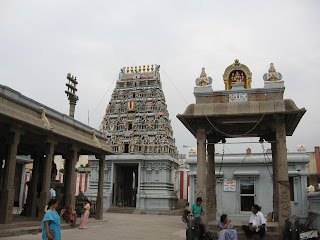The birth place of Peyalwar

During the Bhakti movement in South India, twelve revered saints emerged as passionate devotees of Lord Vishnu. They are collectively known as the Alwars. Their icons are commonly found in Vishnu temples across the region, reflecting their enduring spiritual legacy. Peyalwar, the third among the Alwars, is believed to have lived in the 7th century CE. His deep, almost frenzied devotion to Vishnu earned him the name "Pei" Alwar — with "Pei" meaning ghost in Tamil, a reference to his intense spiritual fervor. According to legend, Peyalwar was born on a red lily ( sevvalli ) flower in a well. He is also considered to be the incarnation of Nandakam, the divine sword of Vishnu. The birthplace of Peyalwar is located near the Madhava Perumal Temple on Arundale Street in Mylapore, a bustling locality in Chennai. Despite Mylapore’s prominence, this sacred site remains largely unknown and is sadly neglected today. The original well where Peyalwar is believed to have be...





